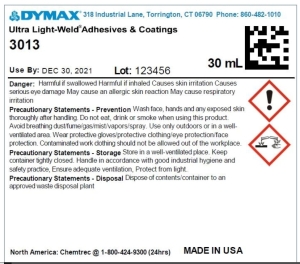Understanding Shelf Life of Light-Curable Materials
Shelf life is defined as the length of time that a commodity may be stored without becoming unfit for use, consumption, or sale. So how is shelf-life determined and what factors affect it? In this blog post we’ll address the 5 most common questions about shelf life to help avoid any costly mistakes.
How is the shelf life of a product determined?
The shelf life of a product is determined by internal product testing. The determination is not solely based on the chemistry itself, but also on the package size in which the material is contained. A material may respond differently when stored in a 15-liter pail than it would in a 3-mL syringe.
Where do I find the shelf life of a product?
The shelf life of a product is almost always listed on the product data sheet. Every product is issued a “use by” date, which is the date the shelf life ends. It’s usually found on the product label as well. Different package sizes of the same product might have different shelf lives - so make sure to check. The picture below shows an example of a Dymax adhesive label with a "use by" date.
What happens to a material beyond its shelf life?
A material that remains unused in the original packaging, and has been stored under recommended conditions, may begin to see negative effects beyond the stated shelf life. The effects can be near immediate or be part of a slow decay in performance. Effects may include some or all the following: longer cure times, failure to cure, gelling in the package, changes in viscosity, syneresis/separation, and decrease in performance. Make sure to contact your manufacturer to answer any questions you might have.
Can storing conditions affect shelf-life?
Absolutely. Temperature, for example, is a very important element that you need to pay attention to. If a product is stored in a higher than ideal temperature, its stability and efficacy is at risk. Likewise, if your storing conditions are colder than indicated by the manufacturer, then potential freezing/thawing will cause material separation and product quality could be in question.
Can the material be used beyond the expiration date?
Yes and no. If the user would like to continue use of the product once the shelf life has expired, most manufacturers strongly recommend the user repeat the same validation testing when the material was first qualified into the application. The testing of light-curable materials, for example, typically consists of rate of cure, depth of cure, and destructive testing to monitor bond strength. It is the responsibility of the user of the material to determine which test criteria should be performed, and if the results still conform to the product design requirement.
_________________________________________________________
Enjoying This Content? Let’s Stay Connected.
If you’re finding value in our insights, why not get more of it—delivered right to your inbox? Subscribe to receive the latest technical articles, white papers, product news, and expert tips.

